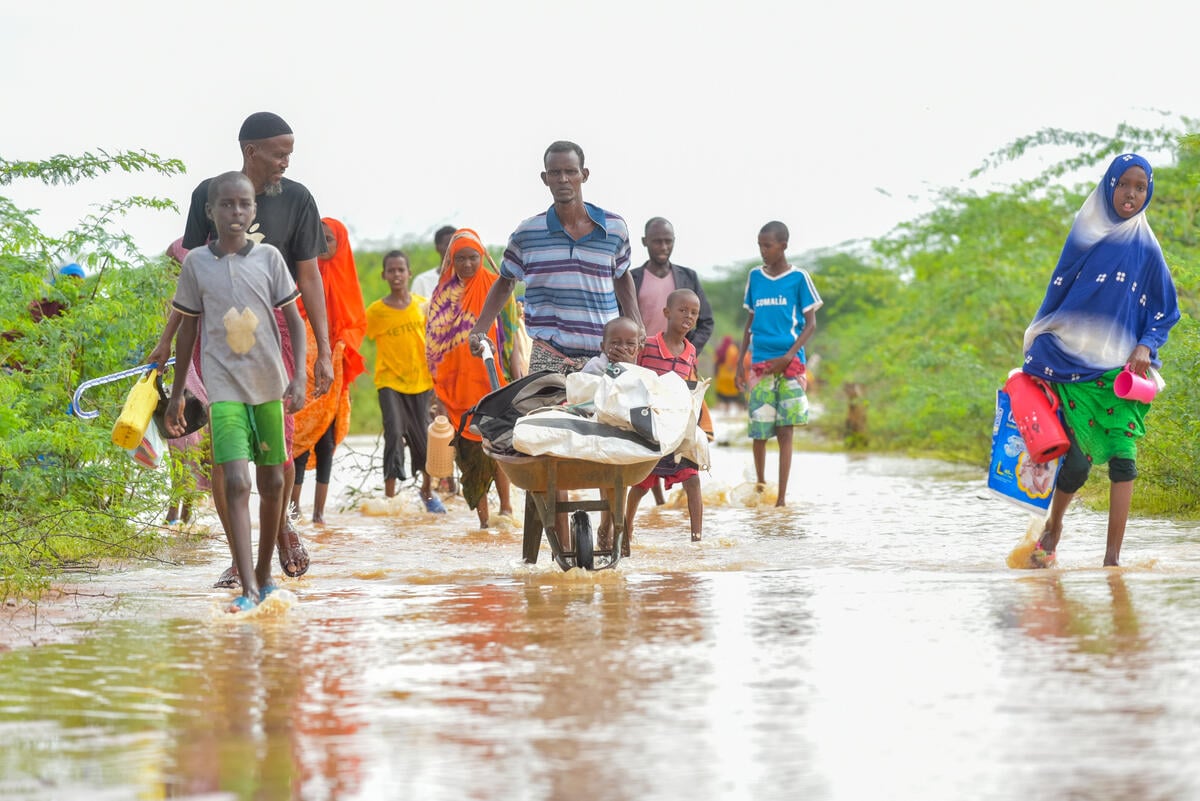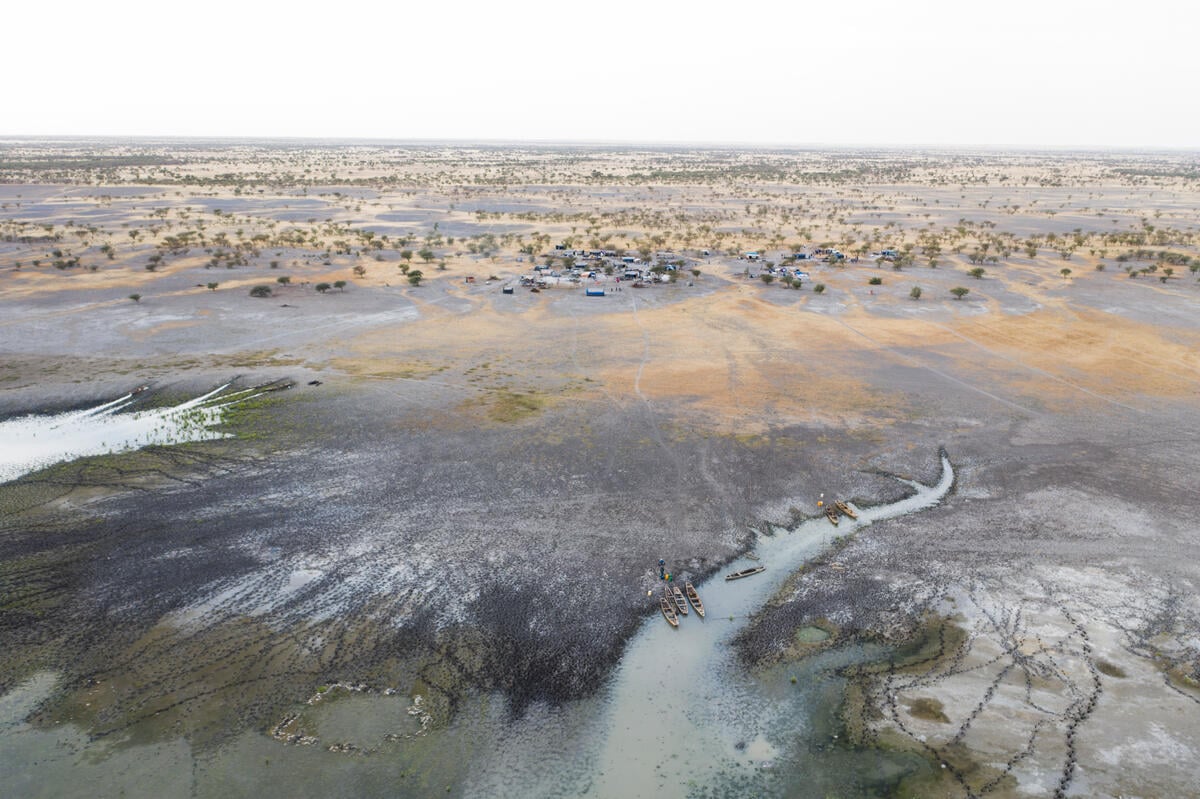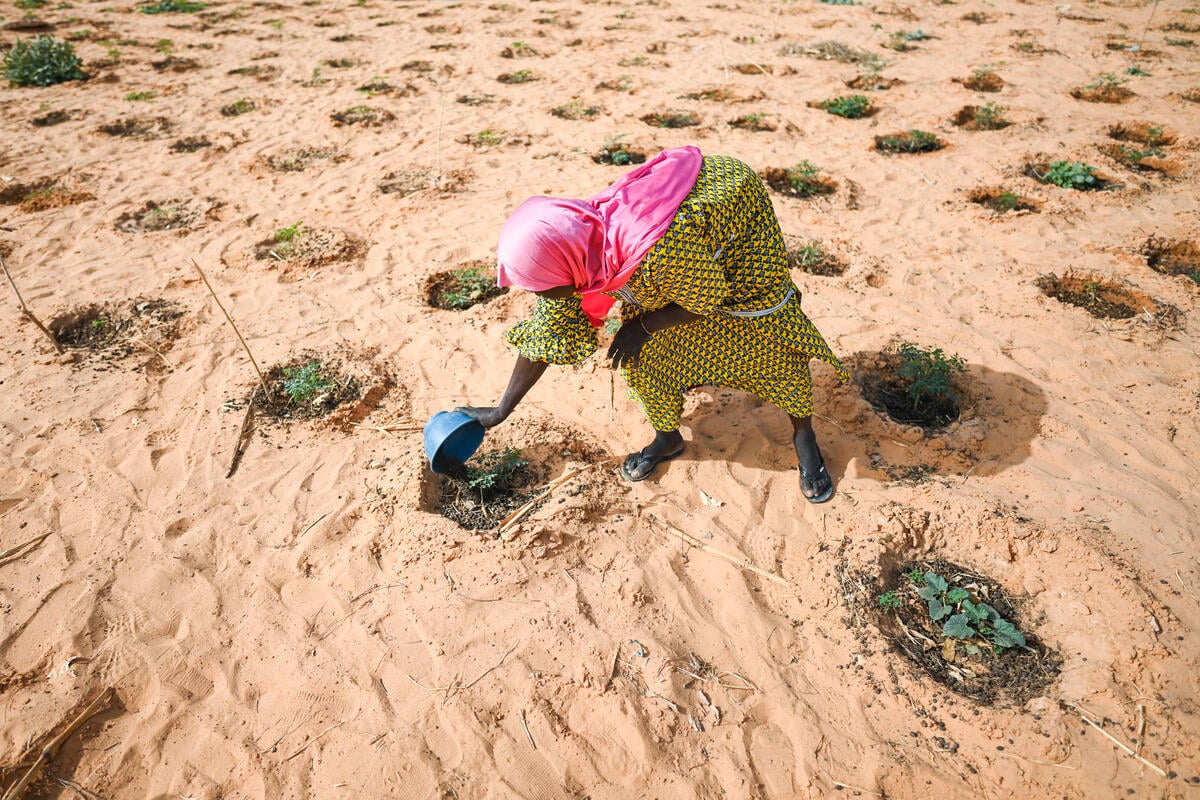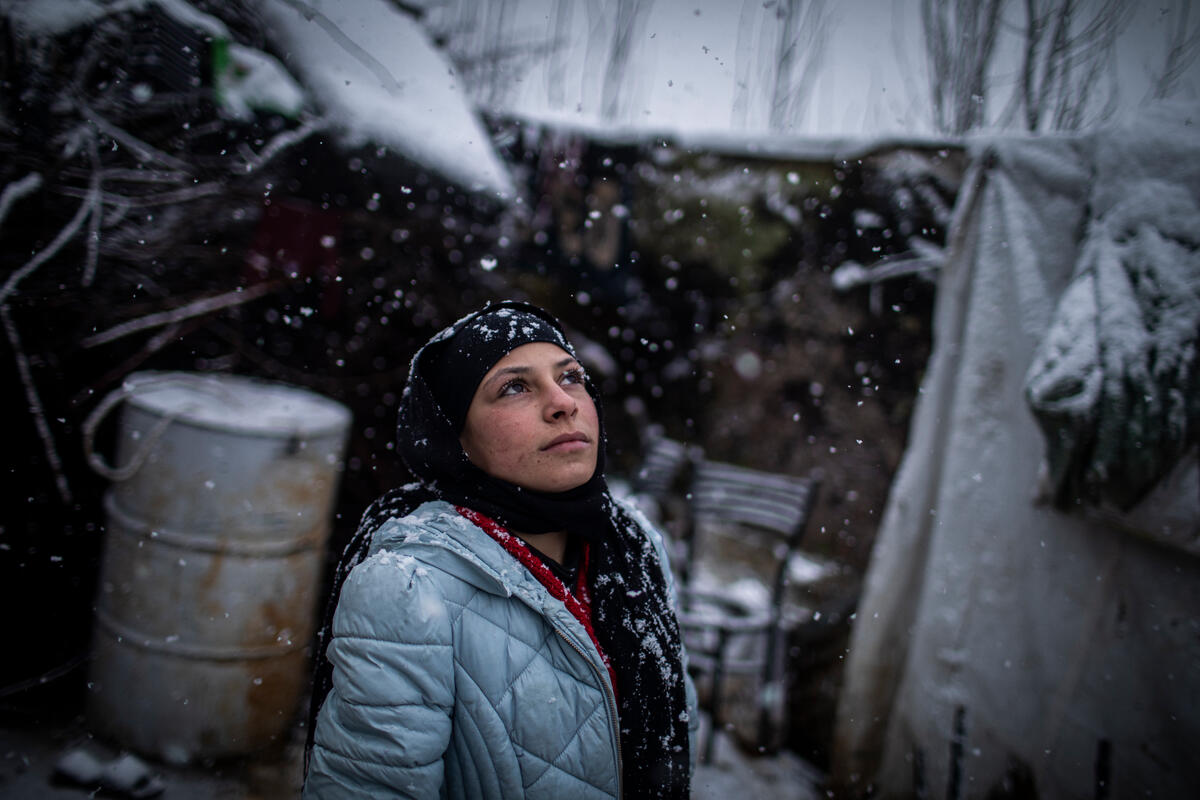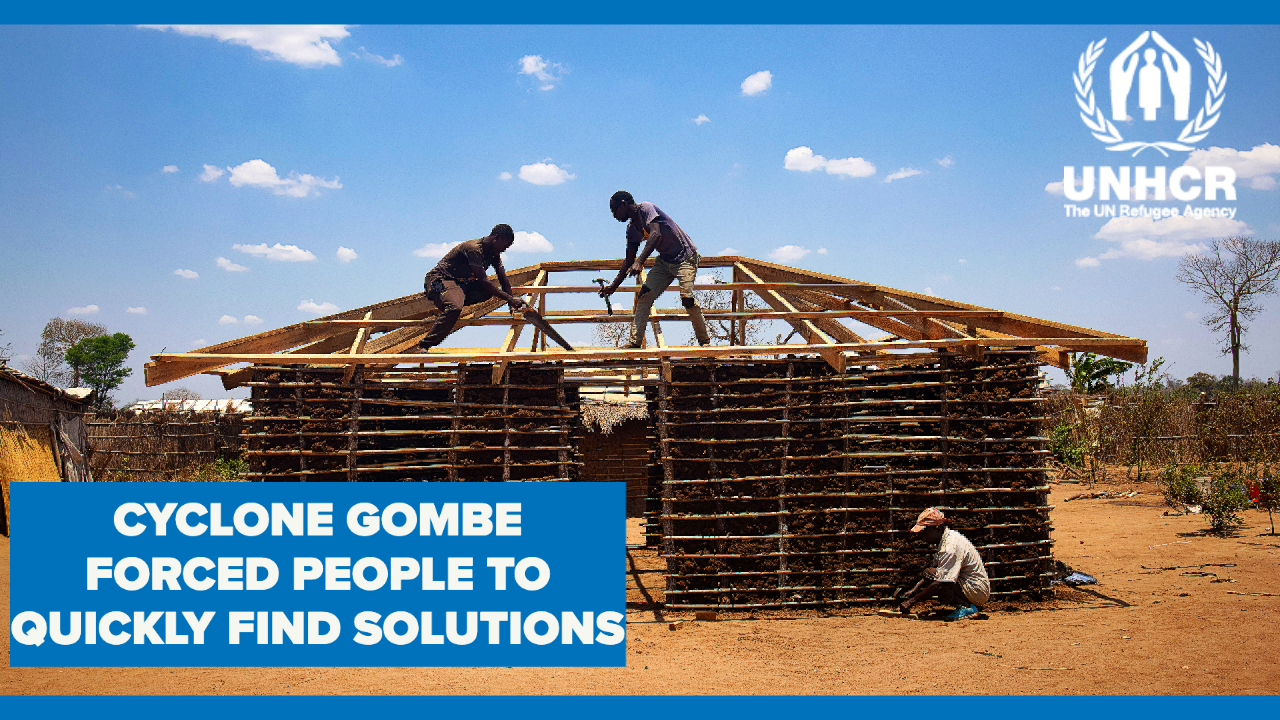Extreme weather leaves Ethiopian refugees vulnerable in eastern Sudan
Anna* recalls how just a few days ago she would sigh with relief as she stepped out of the scorching heat into the welcoming shade of her tent in eastern Sudan’s Tunaydbah refugee settlement.
“The heat can be unbearable,” says the 21-year-old Ethiopian refugee who is now grappling with another problem – heavy rains.
Her struggle with the extreme weather is similar to that of thousands of Ethiopians who have arrived in eastern Sudan over the past six months, after fleeing violence in Tigray. Many brought very few belongings and after months of scorching heat, are now facing the long rains, which begin in May and last until October.
Rain and strong winds have already destroyed some shelters and latrines and resulted in flooding in some areas of the settlement, which hosts some 20,000 refugees.
The settlement, which is in a semi-arid area where temperatures can reach as high as 45°C, was set up in January this year to cope with the influx after another settlement, Um Rakuba reached its full capacity. The flat surrounding landscape, dotted with sparse bushes and rocky outcrops, is prone to flash floods that have become more severe in recent years.
Various studies, including by UN agencies, suggest this is due to changes in the climate that are resulting in increasingly unpredictable rainfall and rising temperatures across Sudan’s arid and semi-arid drylands. Climate change is being felt worldwide, but Sudan is among the countries that are most vulnerable and least ready to adapt to its effects, which it is experiencing while simultaneously struggling with conflict, poverty and high levels of displacement.
“We want to combine all these efforts to prevent other problems...like cholera.”
Last year, heavy rains and floods wreaked havoc across Sudan, affecting hundreds of thousands of people, including refugees and internally displaced people.
UNHCR, the UN Refugee Agency, and partners are already evacuating refugees whose shelters have been affected by the rains and putting other measures in place.
Akaran Napakiro, a field officer with UNHCR based in Gedaref State where the settlement is located, is leading these efforts.
She explains that some 50 people whose tents were destroyed have been moved to one of the agency's Rubb Halls and that there are plans to provide refugees with more durable shelters to protect them from the elements. Relief items, including food, blankets and sleeping mats that were stockpiled will be distributed to affected families.
“We want to combine all these efforts to prevent other problems that come along with the floods, like cholera,” she says.
She adds that a topographical survey of the area was done to better understand which areas of the settlement are most at risk of flooding.
“The topographical images show that when it floods, the western side will be more affected,” Akaran explains. “We are creating canals to avert the water away from the population on that side.”
With access to the settlement set to become more difficult as heavy rains render roads impassable, there are plans to reinforce the road to the nearest town where supplies come from over 130 kilometres away.
“I miss the nice weather and the normal life I had back home.”
Another priority is to create more sustainable conditions for refugees living here. That includes addressing their energy needs to reduce deforestation and the need for them to search or pay for firewood. Together with the Government of Sudan and partners including the World Food Programme (WFP) and the United Nations Development Programme (UNDP), UNHCR has distributed energy-saving stoves and solar panels for cooking and lighting. UNDP has also installed solar lamps in common areas like markets and streets.
“Refugees are already using these stoves and cutting down the cost of energy,” explains Akaran.
She adds that they are also encouraged to make their own traditional cooking stoves which are energy-saving, convenient and culturally accepted.
Refugees are also being assisted to plant drought-resistant plants and fruits such as bananas, both to supplement their diets and to provide shade and greenery in the settlement.
As UNHCR works with partners to shield refugees from the rains, refugees like Anna continue adjusting to the extreme climate.
“I miss the nice weather and the normal life I had back home,” says Anna, who was studying psychology at university when the violence broke out. “If I could, I would return home right now. But the situation is still terrible, so I have to stay here. At least I am safe.”







